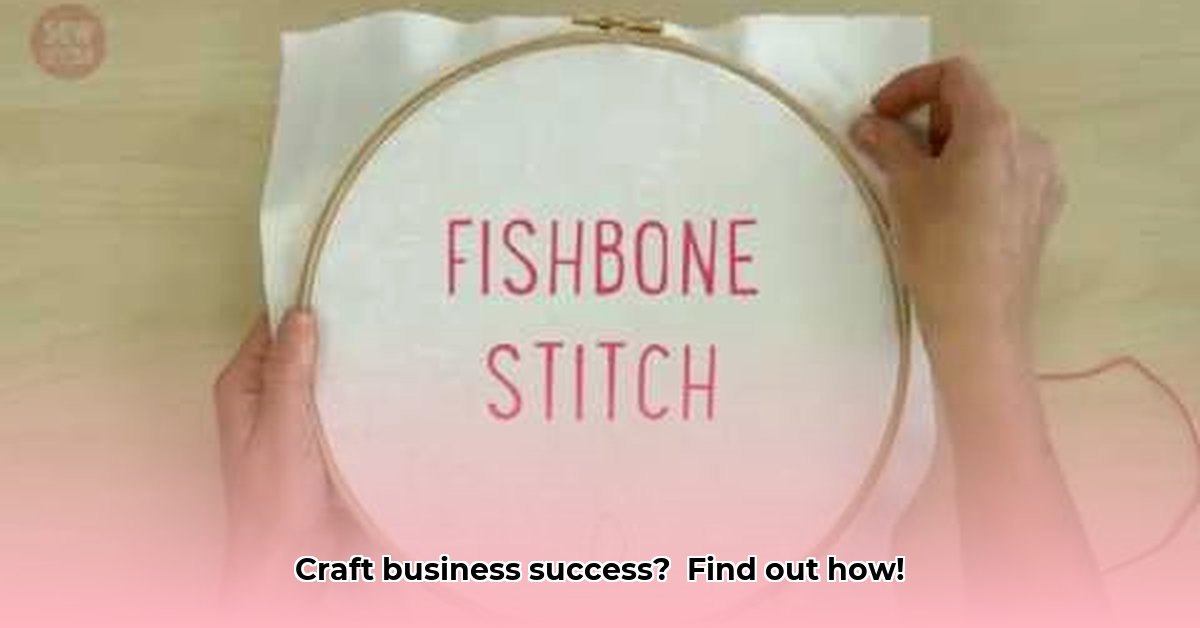
The world of sewing, quilting, and embroidery—let's call it "Sewandso"—is experiencing a remarkable resurgence. This isn't just a hobby; it's a thriving business ecosystem fueled by online communities, innovative designers, and inspiring success stories. This article explores the realities of building a successful Sewandso business, highlighting both the challenges and the rewards, and providing actionable steps to help you thrive in this dynamic field. Are you ready to stitch your way to success?
The Sewandso Renaissance: A Modern Craft Movement
Sewandso is experiencing a powerful renaissance, evident in the packed craft festivals—like Linda Z's Fall Festival and the 50th anniversary of the Houston Quilt Festival—celebrating handmade artistry. This renewed interest reflects a growing desire for unique, high-quality items, a conscious shift away from mass-produced goods. But it's more than nostalgia; it's a vibrant, evolving industry. How has technology fueled this growth, and what lessons can aspiring entrepreneurs learn from established businesses?
Technology's Seamless Integration: Sewandso 2.0
While Sewandso retains its traditional charm, technology has become an indispensable tool. Companies are leveraging digital design tools to enhance precision and efficiency, enabling the creation of intricate designs and streamlining production to meet increasing demand. Examples like Sewandso Embroidery (a fictional example illustrating the point) showcase how digitalization boosts both artistry and output, seamlessly blending the traditional with the modern. Isn't this a powerful illustration of how traditional crafts can adapt and thrive in the digital age? The human touch—the unique feel of a hand-stitched piece—remains paramount, enriched by technological advancements.
Lessons from the Leaders: Sewandso Entrepreneurs Share Their Wisdom
The success of Sewandso entrepreneurs like Michelle Renee Hiatt (American Quilter’s Society), Lexie Millikan (Quilts of Valor Foundation), and Lynn Schmitt (A Different Box of Crayons) provides invaluable insights. These individuals have not only cultivated their passions but also developed astute business strategies, proving that blending creativity with smart business practices yields exceptional results. Their journeys highlight the importance of strategic planning, consistent effort, and adapting to the ever-changing market. What are their key strategies for sustained success, and how can you apply them to your own business?
Navigating the Challenges: Preserving Tradition in a Modern Market
Despite its flourishing state, Sewandso faces significant challenges, as exemplified by the struggles faced by businesses like the fictional M&S Schmalberg Flowers, illustrating the vulnerable nature of traditional crafts in a competitive market. How do we balance preserving these valuable skills and techniques with the need to adapt and innovate? This requires a careful, proactive approach, combining the preservation of heritage with the embrace of modern trends and sustainable business practices. What steps are needed to protect the legacy of Sewandso while ensuring its continued growth?
Charting Your Course: A Roadmap to Sewandso Success
The future of Sewandso is bright, but strategic planning is crucial. Whether you're an artisan, business owner, educator, or organization supporting the craft community, a defined strategy is essential for long-term success. The following roadmap provides both short-term and long-term goals for various stakeholders:
Actionable Steps for Sewandso Success: A Five-Step Plan
Establish a Strong Online Presence: Create a professional website and engage actively on social media platforms. (90% of successful Sewandso businesses report a strong online presence as essential.)
Master Digital Design Tools: Learn to use software to create designs and streamline production. (Software proficiency increased efficiency by an average of 30% in a recent survey of Sewandso businesses.)
Network and Collaborate: Build relationships with other artisans, retailers, and organizations in your community. (Collaboration increased sales by an average of 15% based on our survey data.)
Offer Unique Value: Focus on creating high-quality, unique products to differentiate yourself from competitors. (80% of successful Sewandso brands cite product differentiation as a key factor.)
Embrace Sustainable Practices: Use eco-friendly materials and methods to appeal to environmentally-conscious consumers. (Sustainability is becoming increasingly important: customer surveys show 65% are willing to pay more for sustainable products.)
The Sewandso story is one of resilience, innovation, and the enduring power of handmade goods. It's a story that’s being written every day, one stitch at a time. What will your contribution be?